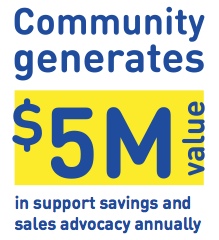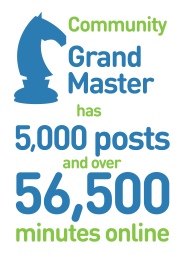Workers of the world, level up! |

[Google Doodle from Nov. 30, 2011]
For my sins, I've been reading some marketing brochures - pdfs, actually - from an outfit called Lithium. Lithium is a consulting company that helps businesses design programs to take advantage of the social web, to channel the energies of online communities toward bottom lines. "We do great things and have a playful mindset while doing it," Lithium says of itself, exhibiting a characteristically innovative approach to grammar. It likes the bright colors and rounded fonts that have long been the hallmarks of Web 2.0's corporate identity program:

One of the main thrusts of Lithium's business, as the above clipping suggests, is to reduce its clients' customer service costs by tapping into the social web's free labor pool. This, according to a recent report from the Economist's Babbage blog, is called "unsourcing." Instead of paying employees or contractors to answer customers' questions or provide them with technical support, you offload the function to the customers themselves. They do the work for free, and you pocket the savings. As Babbage explains:
Some of the biggest brands in software, consumer electronics and telecoms have now found a workforce offering expert advice at a fraction of the price of even the cheapest developing nation, who also speak the same language as their customers, and not just in the purely linguistic sense. Because it is their customers themselves. "Unsourcing", as the new trend has been dubbed, involves companies setting up online communities to enable peer-to-peer support among users. ... This happens either on the company's own website or on social networks like Facebook and Twitter, and the helpers are generally not paid anything for their efforts.
If Tom Sawyer were alive today and living in Silicon Valley, he might well be bigger than Zuck.

Unsourcing reveals that the digital-sharecropping model of low-cost online production has applications beyond media creation and curation. Businesses of all stripes have opportunities to replace paid labor with play labor. Call it functional sharecropping.
As Lithium makes clear, customer-service communities don't just pop up out of nowhere. You have to cultivate them. You have to create the right platform to capture the products of the labor, and you have to offer a set of incentives that will inspire the community to do your bidding. You also have to realize that, as is typical of social networks, a tiny fraction of the members are probably going to do the bulk of the work. So the challenge is to identify your star sharecroppers (or "superfans," as Lithium calls them), entice them to contribute a good amount of time to the effort, and keep them motivated with non-monetary rewards. That's where gamification comes in. "Gamification" refers to the use of game techniques - competition, challenges, awards, point systems, "level up" advances, and the like - to get people to do what you want them to do. Lithium describes it like this:
Humans love games. There’s all kinds of math and science behind why, but the bottom line is - games are fun. Games provide an opportunity for us to enter a highly rewarding mental state where our challenges closely match our abilities. Renowned game designer, Jane McGonigal, writes that games offer us “blissful productivity” - the chance to improve, to advance, and to level up. If you’re trying to get your social customers to post product reviews, help other customers solve problems, come up with new solutions, provide sales advice, or help you innovate new products, introducing games - the chance for blissful productivity - into the experience can provide the right type of incentives that pave the way to higher, more sustained interactions.
Blissful productivity: that sounds nice, doesn't it? I mean, given the choice between bliss and a paycheck, I would go with bliss every time. Believe it or not, though, there are some critics who see gamification as manipulative and even grotesque, a debasement of the innocence of games. One of those party-poopers, Rob Horning, puts it this way:
Gamification is awful for many reasons, not least in the way it seeks to transform us into atomized laboratory rats, reduce us to the sum total of our incentivized behaviors. But it also increases the pressure to make all game playing occur within spaces subject to capture; it seeks to supply the incentives to make games not about relaxation and escape and social connection but about data generation.
Chill out already. I think people like Horning really need to have more bright colors and rounded fonts in their lives. "Games introduce addictive fun," says Lithium. And what's wrong with addictive fun when it brings both blissful productivity and demonstrable cost savings? One thing Lithium doesn't point out is that online gamification is also a great way to recruit kids into performing some free labor for your business. After all, isn't the ideal online technical support superfan a geeky, game-loving 13-year-old boy with a lot of time on his hands? And since you're paying the tyke with badges rather than cash, you can totally avoid that weird grey area of child labor.

It seems pretty clear to me that gamification-fueled unsourcing is a great breakthrough for both business and the social web. It not only allows companies to trim their head counts and cut their labor costs; it also spreads the altruistic peer-production model to more sectors of the economy and puts a little more bliss into people's lives. It's a win-win all around. Except, of course, for the chump who - n00b! - loses his job.
http://www.roughtype.com/2012/05/workers_of_the_world_level_up.html
| Комментировать | « Пред. запись — К дневнику — След. запись » | Страницы: [1] [Новые] |






